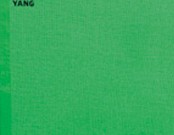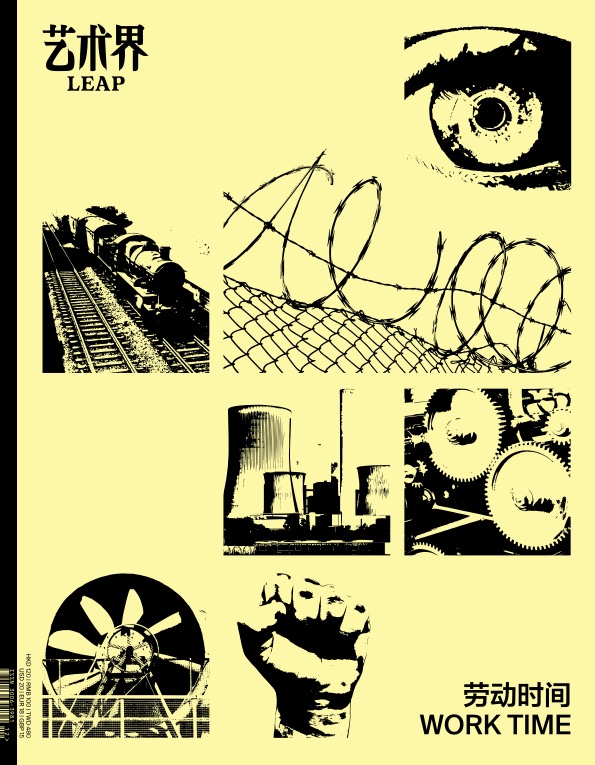Ping Pong (《乒乓》) is a new indie comics anthology featuring works from an up-and-coming generation of Hong Kong comics artists and illustrators. This new generation follows in the footsteps of alternat…
Read MoreWhat is there to be observed on the road? The concept of “roadway observation,” a localized set of the techniques of the f lâneur, can be traced to the Great Kanto Earthquake of 1923. Tokyo was dilapi…
Read MoreIN THE POSTSCRIPT to Wang Min’an’s collection of theoretical essays, A Discourse on Household Electronics, he writes that one of his best students once asked him to explain their scholarly significanc…
Read MoreTranslated / Xiaowei Wang UNLIKE THE WRITTEN word, where the battlefield lies between ink and paper, artists’ books serve as a delayed convergence of work and viewer. These works of art do not sit inside the white cube waiting for visitors, but instead seek their audiences in a wide marketplace. Yan Cong’s Collage, which was…
Read MoreAFTER A FEW YEARS of discursive waffling about cosmopolitanism and international visual culture, Chinese contemporary art—as a distinct object of research and scholarship—is back with a vengeance. This spring (or, perhaps more appropriately, semester) sees the arrival of two ambitious new historical narratives of the genre, both of which will find their primary homes in…
Read MoreWEB EXCLUSIVE HONG KONG-BASED architect and collector William Lim intends for his recent book, The No Colors, to function as “a book about Hong Kong contemporary art using my own collection as the backdrop.” From this ambitious statement, one might expect an art historical tome—a volume grounded in text with accompanying images. Instead, The No…
Read MoreFONGFO IS A periodical published on the 21st of each month, saddle-stiched in B4 size. Though not unlike the magazine Stories, it is typically only around 12 pages long. Created by a group of artists, Fongfo is not quite an art publication, nor is it a media platform in the shape of a magazine. The…
Read MoreON RADICAL ART: The 80s Scene in Shanghai is a historical reflection on the paucity of language and ideological resources. Despite its title, On Radical Art: The 80s Scene in Shanghai covers a period …
Read MoreIMAGINE ENCOUNTERING A plastic duplicate of Canova’s neoclassical marble sculpture The Three Graces (1814-1817) in a lesbian pub. Three pale white female figures in the nude, their genitals covered by…
Read MoreJAPANESE ADULT VIDEO (AV) has a special significance in China. Less and less seen as a tool for masturbation, it has accrued cynical, subversive connotations. Sora Aoi became a model of morality overnight, leading netizens of social strata, including public intellectuals, to vie to be the first to express their fondness for these pornographic productions….
Read MoreSIXTEEN YEARS HAVE passed since the Hong Kong handover in 1997. The writer Yesi, whose real name is Leung Pingkwan, was born in Guangdong in 1949 and grew up in Hong Kong. Over the past 16 years, he has mentioned his desire to “write about Hong Kong in earnest” on more than one occasion. This…
Read MoreIN A BRIEF History of Curating, Hans-Ulrich Obrist speaks candidly with Lucy Lippard about the most significant motivation for the creation of his oral history: the lack of documentation in the history of exhibition and curation. Hence the term “Brief History” rather than “Interviews” appearing in the title. In this book, Obrist interviews 11 veteran…
Read MoreWHY RETHINK RELATIONALITY now? The recent surge of relational practice and community-oriented art in China seems to be finally subsiding even as critical interest in such work is transferred into the scope of nouveau institutional critique. Indeed, editor of this volume and curator of the attendant exhibition Bea Leanza notes early on in her introductory…
Read MoreTHE FUTURE IS Now: Art, Technology, and Consciousness is a collection of essays and lectures by British media art pioneer Roy Ascott. The book contains his writings from 1964 to 2011, presented in chronological order. What is odd is that writings from each period are all grouped under the same subject heading— as though over…
Read MoreConsisting of artists Song Dong, Xiao Yu, Hong Hao, and Liu Jianhua, and critic/curator/gallerist Leng Lin, Polit-Sheer-Form Office (PSFO) was originally charted to seek out “collective form.” This book chronicles this six-year search, and in a very detailed manner: in a nod to the absurdist connotations the name PSFO holds in Chinese (translated literally, the…
Read MoreFollowing on her magnanimous portrait series of migrant workers in Beijing, Substructure, Beijing-based Korean-American photographer Cindy Hwang, a.k.a. CYJO, published this hefty collection of 237 portraits of fellow kyopo (people of Korean ethnicity living outside of Korea), and their survey-response texts to a set of standardized questions. However much the focus is placed on the…
Read MoreLanding on the occasion of Berlin-based Korean-born artist Haegue Yang’s solo exhibition at the Zumthor-designed Kunsthaus Bergenz (KUB) in Austria, Arrivals expands beyond solo exhibition catalogue to stand as a catalogue raissoné, a printed compilation of Yang’s creative output from 1994 onward. It is this that forms the bulk of this hefty publication, as a…
Read MoreTrained at the Rijksakademie in Amsterdam and based between there and Calcutta, Praneet Soi is an artist for a hybrid moment. His first major monograph, with texts by leading curators Charles Esche and Ranjit Hoskote (who showcased him prominently at the India pavilion of the recent Venice Biennale), outlines a practice that hinges on a…
Read MoreThe ongoing curricularization of contemporary art from Asia continues with this anthology, edited by the husband-and-wife, museum-director-and-magazine-editor duo of Chiu & Genocchio. They take 2008 as their starting point, noting that the year of the financial crisis was also the year “Asian artists stormed the citadel of the New York art world.” Stormed? Or were…
Read MoreEstablished after Taikang Space moved to Caochangdi and named after the total floor area in the gallery’s space it occupied, 51m² was especially dedicated to holding exhibitions of young artists on a rolling basis. From October 17, 2009 until January 8, 2011, 51m² spanned fifteen months and ultimately played first home to the new works…
Read More















